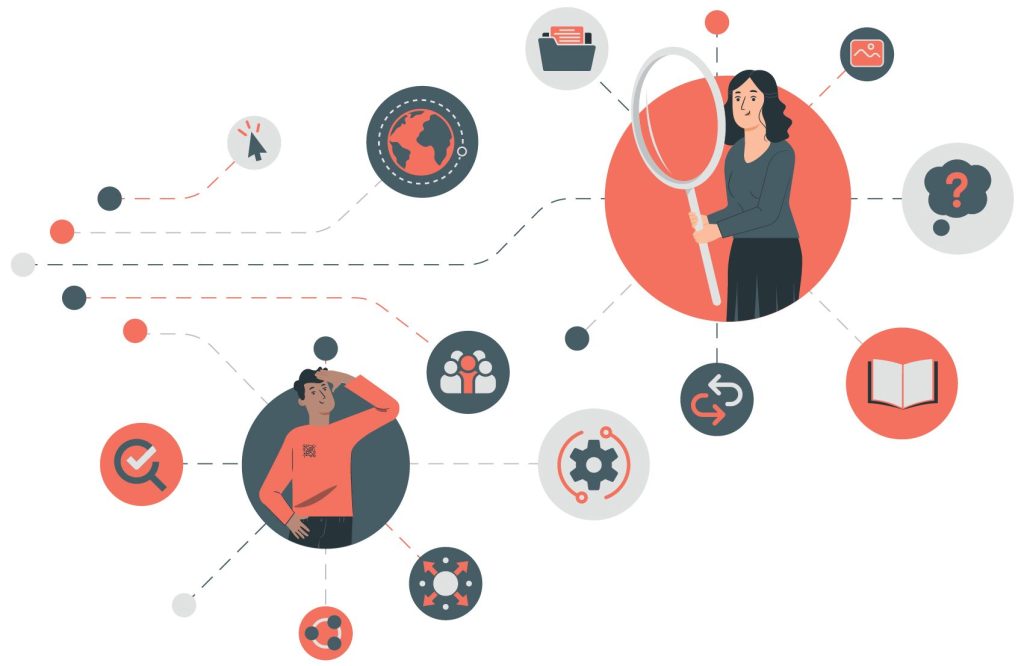Module 1: Research as strategic inquiry

Introduction to the module
In this module, we begin with an introduction to active reading.
Active reading
Active reading can be defined as reading “questions” in mind that help to evaluate, interpret and evaluate sources, including academic sources.(Sun, 2020; Duncan, n.d.). An active reader engages with a source by asking basic questions, such as “What is the author saying?” and by asking more critical questions such as, “What is the author’s argument? What is the research question being asked and what evidence is produced? What are the strengths and limitations of the research process?” In addition, an active reader reads a source more than once: skimming for highlights in a first read-through, and then re-reading a second time to answer specific questions in depth.
Research process
In the second half of the module, we identify the key components of the research process and focus on how to identify a research topic, develop a research question, and plan a precision search to find relevant sources.
Searching is a key component of the research process and usually begins with a question that identifies the information we need.
The process is strategic because it is shaped by your research question and does not proceed in a “straight line”, i.e., you will search for and find sources, read them, revise your thinking, and probably do a second search before you end up with a list of sources that you think are most relevant and helpful for your project.
For example, you might start with “climate change” as a search term and revise this idea to include Canada and “green energy” as you review our initial results and clarify your ideas.
You will use a number of strategies to find your sources. For example, initially you might search online for news articles about climate change. But, as your searching advances, you will also use library databases to find academic articles.
Searching for sources is a strategic process that you will use many times during your academic career. You should be able to transfer the skills that you learn in this course to the other courses that you take.
References
Sun, T. (2020). Active versus passive reading: how to read scientific papers? Natural Science Review, 7(9), pp. 1422-1427).
Duncan, J. (n.d.). Reading critically. University of Toronto Scarborough.https://q.utoronto.ca/courses/264288/pages/introduction-to-writing-reading-and-note-taking-at-university

